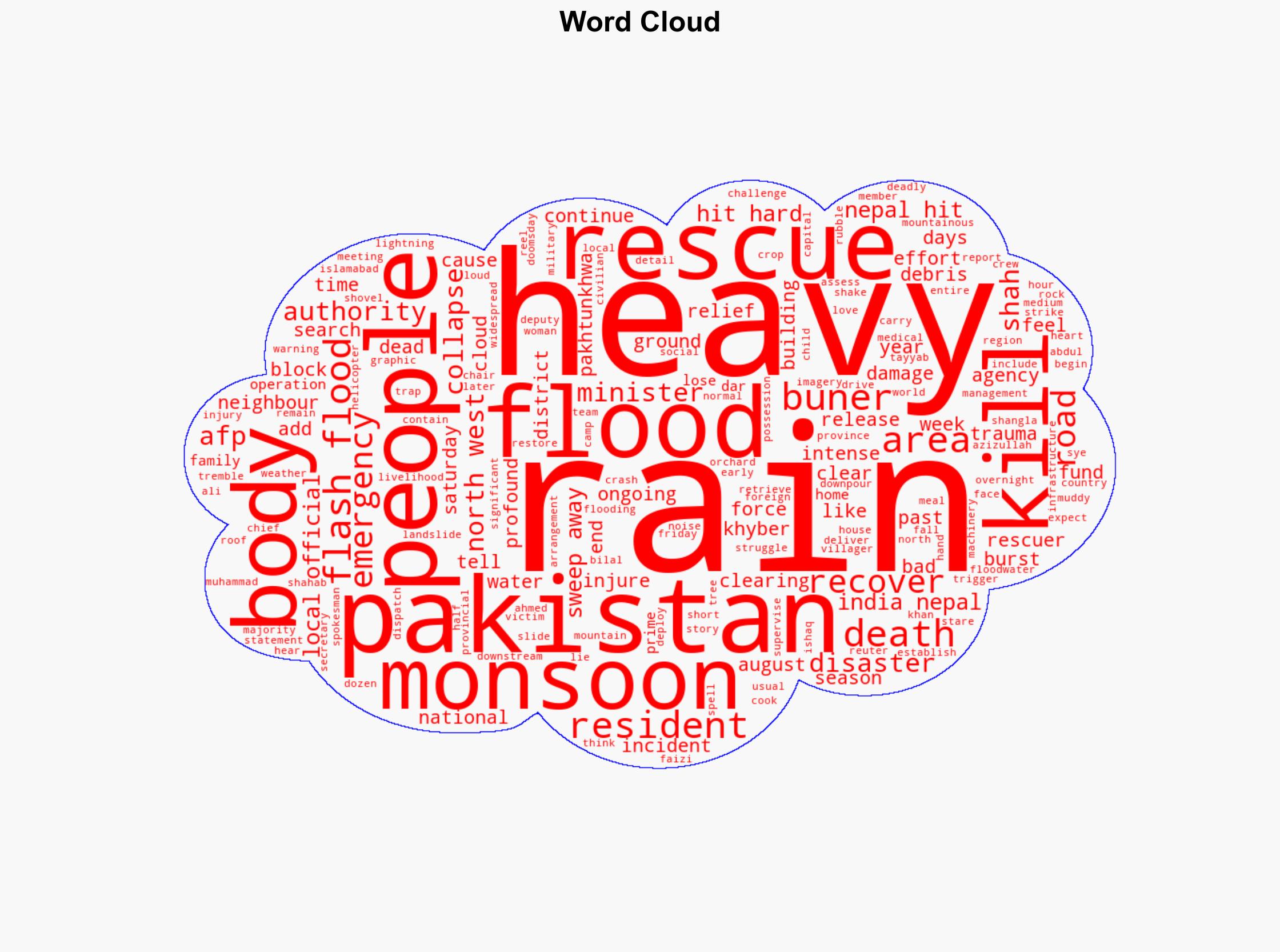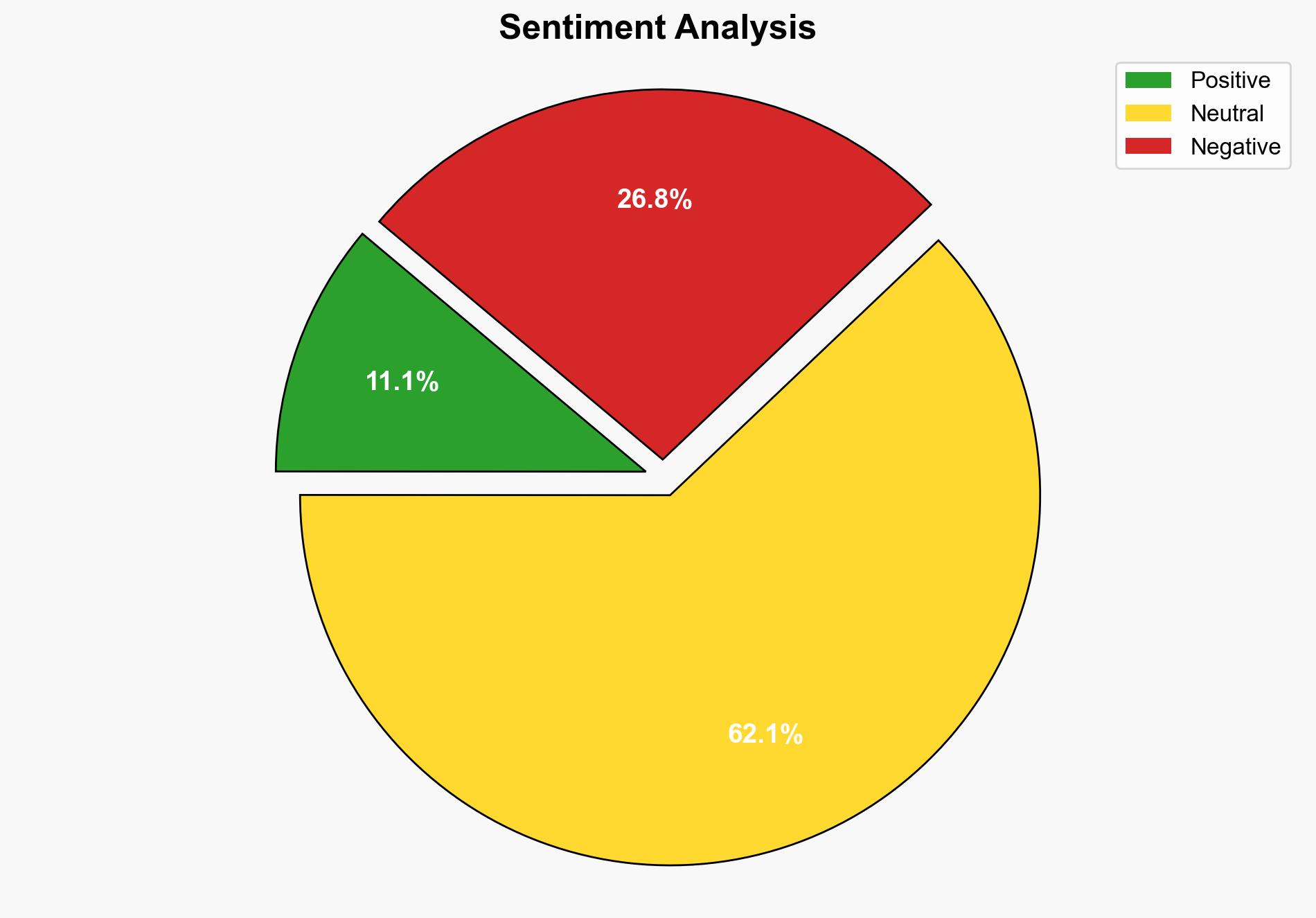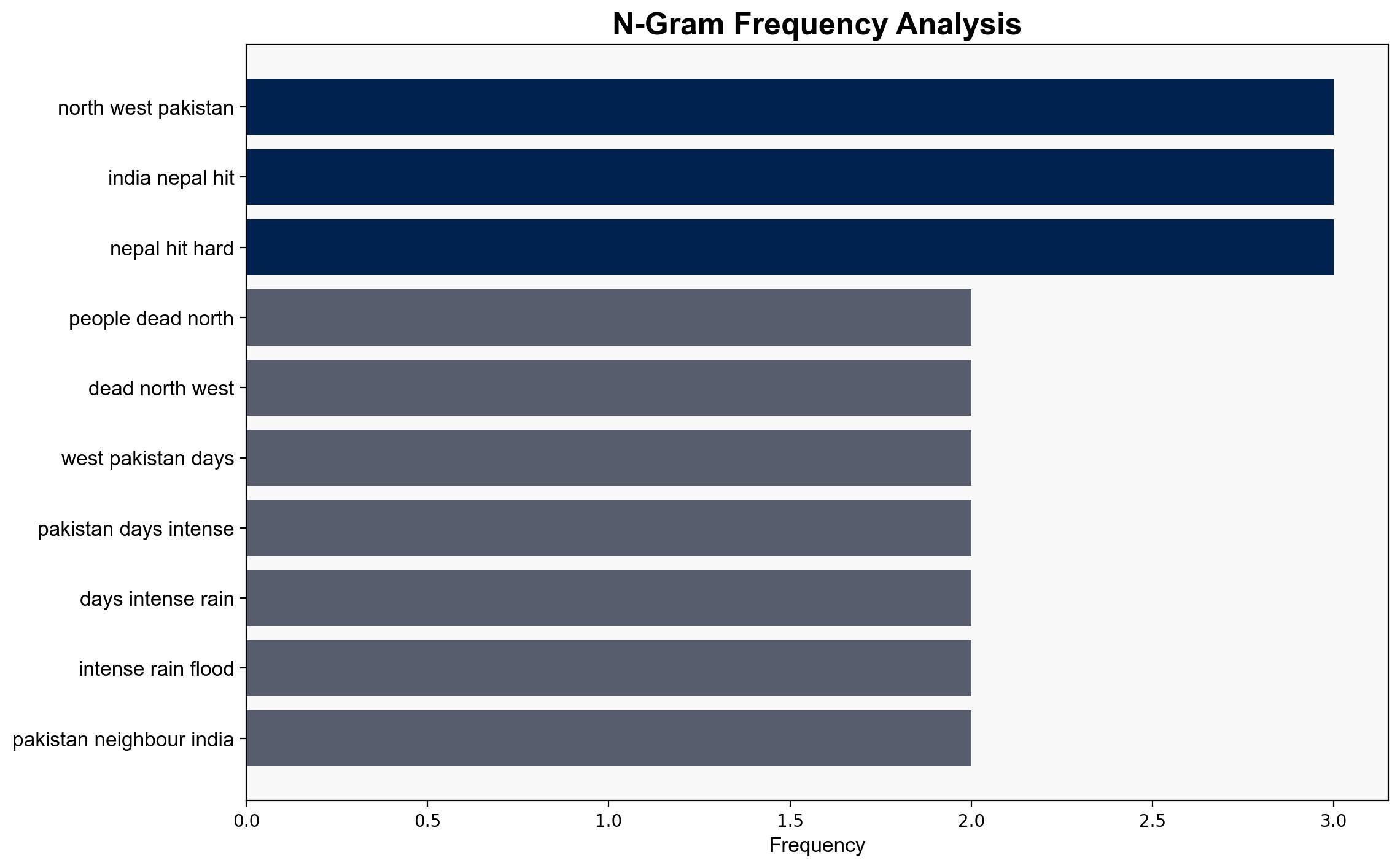More than 300 people dead in Pakistan after heavy rains floods – ABC News (AU)
Published on: 2025-08-16
Intelligence Report: More than 300 people dead in Pakistan after heavy rains floods – ABC News (AU)
1. BLUF (Bottom Line Up Front)
The most supported hypothesis is that the heavy rains and subsequent flooding in Pakistan are primarily a result of natural climatic variations, exacerbated by inadequate infrastructure and emergency preparedness. Confidence in this hypothesis is moderate due to the complexity of climate patterns and potential underreporting of infrastructure issues. Immediate action should focus on enhancing disaster response capabilities and infrastructure resilience.
2. Competing Hypotheses
1. **Natural Climatic Variation Hypothesis**: The flooding is primarily due to natural climatic variations, including early and intense monsoon seasons, compounded by insufficient infrastructure and emergency preparedness in affected regions.
2. **Anthropogenic Influence Hypothesis**: The flooding is significantly influenced by human activities, such as deforestation and urbanization, which have altered natural water flow and increased vulnerability to extreme weather events.
Using ACH 2.0, the natural climatic variation hypothesis is better supported by the evidence of early monsoon onset and historical patterns of monsoon intensity. The anthropogenic influence hypothesis lacks direct evidence in the provided data but remains plausible due to known regional environmental practices.
3. Key Assumptions and Red Flags
– **Assumptions**: The natural climatic variation hypothesis assumes that current weather patterns are within historical norms. The anthropogenic influence hypothesis assumes significant human impact on environmental stability.
– **Red Flags**: Lack of detailed data on infrastructure conditions and emergency response effectiveness. Potential underreporting of human influence on environmental degradation.
– **Blind Spots**: The role of climate change in altering monsoon patterns is not fully explored.
4. Implications and Strategic Risks
The flooding poses significant risks to regional stability, including economic disruption, displacement of populations, and potential for increased political unrest. The cascading effects could include food shortages and health crises due to damaged infrastructure and stagnant water. Geopolitically, strained resources may lead to increased tensions with neighboring countries also affected by similar weather patterns.
5. Recommendations and Outlook
- Enhance infrastructure resilience through investment in flood defenses and improved urban planning.
- Strengthen regional cooperation for disaster response and resource sharing.
- Scenario Projections:
- **Best Case**: Improved infrastructure and regional cooperation mitigate future flood impacts.
- **Worst Case**: Continued infrastructure failures lead to severe economic and social instability.
- **Most Likely**: Incremental improvements in disaster response reduce immediate impacts but long-term vulnerabilities remain.
6. Key Individuals and Entities
– Bilal Ahmed Faizi
– Sye Muhammad Tayyab Shah
– Azizullah
– Abdul Khan
– Shahab Ali Shah
– Ishaq Dar
7. Thematic Tags
natural disasters, infrastructure resilience, regional cooperation, climate change adaptation





